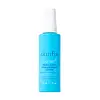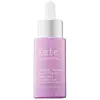What's inside
What's inside
 Key Ingredients
Key Ingredients

 Benefits
Benefits

 Concerns
Concerns

No concerns
 Ingredients Side-by-side
Ingredients Side-by-side

Water
Skin ConditioningPropanediol
SolventJojoba Oil/Macadamia Seed Oil Esters
Skin ConditioningCaprylyl Caprylate/Caprate
EmollientGlycerin
HumectantPolyacrylate Crosspolymer-11
Emulsion StabilisingGlycine Soja Seed Extract
Skin ConditioningOryza Sativa Bran Extract
Skin ConditioningSqualene
EmollientSodium Hyaluronate
HumectantTocopherol
AntioxidantPhytosteryl Macadamiate
Skin ConditioningPaeonia Albiflora Root Extract
Skin ConditioningGluconolactone
Skin ConditioningTrisodium Ethylenediamine Disuccinate
Phytosterols
Skin ConditioningRosmarinus Officinalis Leaf Extract
AntimicrobialHelianthus Annuus Extract
EmollientAloe Barbadensis Leaf Juice
Skin ConditioningChondrus Crispus Extract
Skin ConditioningXanthan Gum
EmulsifyingEthylhexylglycerin
Skin ConditioningPotassium Sorbate
PreservativeSodium Benzoate
MaskingCitric Acid
BufferingPhenoxyethanol
PreservativeWater, Propanediol, Jojoba Oil/Macadamia Seed Oil Esters, Caprylyl Caprylate/Caprate, Glycerin, Polyacrylate Crosspolymer-11, Glycine Soja Seed Extract, Oryza Sativa Bran Extract, Squalene, Sodium Hyaluronate, Tocopherol, Phytosteryl Macadamiate, Paeonia Albiflora Root Extract, Gluconolactone, Trisodium Ethylenediamine Disuccinate, Phytosterols, Rosmarinus Officinalis Leaf Extract, Helianthus Annuus Extract, Aloe Barbadensis Leaf Juice, Chondrus Crispus Extract, Xanthan Gum, Ethylhexylglycerin, Potassium Sorbate, Sodium Benzoate, Citric Acid, Phenoxyethanol
Water
Skin ConditioningGlycerin
HumectantHydrolyzed Yeast Protein
Skin ConditioningButylene Glycol
HumectantPropanediol
SolventCucumis Sativus Seed Oil
EmollientEctoin
Skin ConditioningHydroxyectoin
BufferingCeramide NP
Skin ConditioningCeramide AP
Skin ConditioningCeramide EOP
Skin ConditioningPalmitoyl Tripeptide-8
Skin ConditioningTasmannia Lanceolata Fruit Extract
Skin ConditioningHippophae Rhamnoides Oil
EmollientTocopherol
AntioxidantCholesterol
EmollientEthylhexylglycerin
Skin ConditioningCarbomer
Emulsion StabilisingAspergillus/Molasses Ferment Filtrate
Skin ConditioningPhytosphingosine
Skin ConditioningAdenosine
Skin ConditioningCaprylhydroxamic Acid
Xanthan Gum
Emulsifying1,2-Hexanediol
Skin ConditioningGlycine Soja Extract
Skin ConditioningLecithin
EmollientSclerotium Gum
Emulsion StabilisingPullulan
Dextran
Pentylene Glycol
Skin ConditioningSodium Lauroyl Lactylate
EmulsifyingDisodium EDTA
Silica
AbrasiveSodium Benzoate
MaskingPhenoxyethanol
PreservativeWater, Glycerin, Hydrolyzed Yeast Protein, Butylene Glycol, Propanediol, Cucumis Sativus Seed Oil, Ectoin, Hydroxyectoin, Ceramide NP, Ceramide AP, Ceramide EOP, Palmitoyl Tripeptide-8, Tasmannia Lanceolata Fruit Extract, Hippophae Rhamnoides Oil, Tocopherol, Cholesterol, Ethylhexylglycerin, Carbomer, Aspergillus/Molasses Ferment Filtrate, Phytosphingosine, Adenosine, Caprylhydroxamic Acid, Xanthan Gum, 1,2-Hexanediol, Glycine Soja Extract, Lecithin, Sclerotium Gum, Pullulan, Dextran, Pentylene Glycol, Sodium Lauroyl Lactylate, Disodium EDTA, Silica, Sodium Benzoate, Phenoxyethanol
 Reviews
Reviews

Ingredients Explained
These ingredients are found in both products.
Ingredients higher up in an ingredient list are typically present in a larger amount.
Ethylhexylglycerin (we can't pronounce this either) is commonly used as a preservative and skin softener. It is derived from glyceryl.
You might see Ethylhexylglycerin often paired with other preservatives such as phenoxyethanol. Ethylhexylglycerin has been found to increase the effectiveness of these other preservatives.
Glycerin is already naturally found in your skin. It helps moisturize and protect your skin.
A study from 2016 found glycerin to be more effective as a humectant than AHAs and hyaluronic acid.
As a humectant, it helps the skin stay hydrated by pulling moisture to your skin. The low molecular weight of glycerin allows it to pull moisture into the deeper layers of your skin.
Hydrated skin improves your skin barrier; Your skin barrier helps protect against irritants and bacteria.
Glycerin has also been found to have antimicrobial and antiviral properties. Due to these properties, glycerin is often used in wound and burn treatments.
In cosmetics, glycerin is usually derived from plants such as soybean or palm. However, it can also be sourced from animals, such as tallow or animal fat.
This ingredient is organic, colorless, odorless, and non-toxic.
Glycerin is the name for this ingredient in American English. British English uses Glycerol/Glycerine.
Learn more about GlycerinPhenoxyethanol is a preservative that has germicide, antimicrobial, and aromatic properties. Studies show that phenoxyethanol can prevent microbial growth. By itself, it has a scent that is similar to that of a rose.
It's often used in formulations along with Caprylyl Glycol to preserve the shelf life of products.
Propanediol is an all-star ingredient. It softens, hydrates, and smooths the skin.
It’s often used to:
Propanediol is not likely to cause sensitivity and considered safe to use. It is derived from corn or petroleum with a clear color and no scent.
Learn more about PropanediolSodium Benzoate is a preservative. It's used in both cosmetic and food products to inhibit the growth of mold and bacteria. It is typically produced synthetically.
Both the US FDA and EU Health Committee have approved the use of sodium benzoate. In the US, levels of 0.1% (of the total product) are allowed.
Sodium benzoate works as a preservative by inhibiting the growth of bacteria inside of cells. It prevents the cell from fermenting a type of sugar using an enzyme called phosphofructokinase.
It is the salt of benzoic acid. Foods containing sodium benzoate include soda, salad dressings, condiments, fruit juices, wines, and snack foods.
Studies for using ascorbic acid and sodium benzoate in cosmetics are lacking, especially in skincare routines with multiple steps.
We always recommend speaking with a professional, such as a dermatologist, if you have any concerns.
Learn more about Sodium BenzoateTocopherol (also known as Vitamin E) is a common antioxidant used to help protect the skin from free-radicals and strengthen the skin barrier. It's also fat soluble - this means our skin is great at absorbing it.
Vitamin E also helps keep your natural skin lipids healthy. Your lipid skin barrier naturally consists of lipids, ceramides, and fatty acids. Vitamin E offers extra protection for your skin’s lipid barrier, keeping your skin healthy and nourished.
Another benefit is a bit of UV protection. Vitamin E helps reduce the damage caused by UVB rays. (It should not replace your sunscreen). Combining it with Vitamin C can decrease sunburned cells and hyperpigmentation after UV exposure.
You might have noticed Vitamin E + C often paired together. This is because it is great at stabilizing Vitamin C. Using the two together helps increase the effectiveness of both ingredients.
There are often claims that Vitamin E can reduce/prevent scarring, but these claims haven't been confirmed by scientific research.
Learn more about TocopherolWater. It's the most common cosmetic ingredient of all. You'll usually see it at the top of ingredient lists, meaning that it makes up the largest part of the product.
So why is it so popular? Water most often acts as a solvent - this means that it helps dissolve other ingredients into the formulation.
You'll also recognize water as that liquid we all need to stay alive. If you see this, drink a glass of water. Stay hydrated!
Learn more about WaterXanthan gum is used as a stabilizer and thickener within cosmetic products. It helps give products a sticky, thick feeling - preventing them from being too runny.
On the technical side of things, xanthan gum is a polysaccharide - a combination consisting of multiple sugar molecules bonded together.
Xanthan gum is a pretty common and great ingredient. It is a natural, non-toxic, non-irritating ingredient that is also commonly used in food products.
Learn more about Xanthan Gum